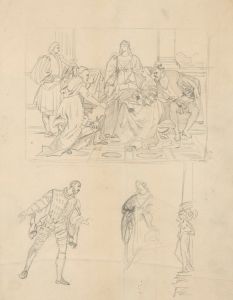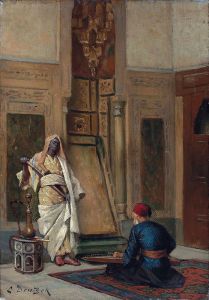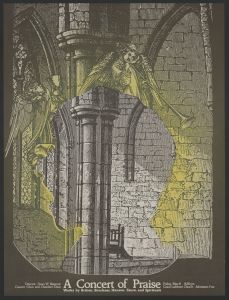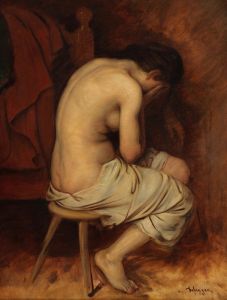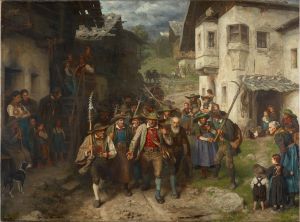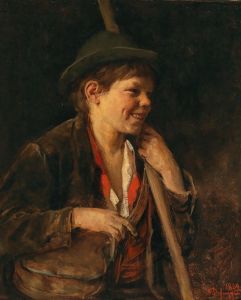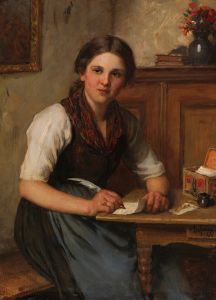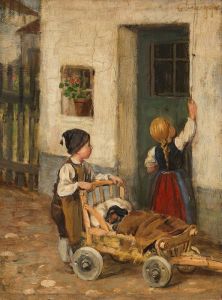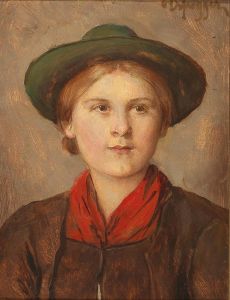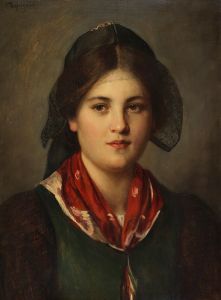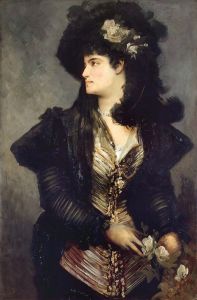
The Zitherplayer
A hand-painted replica of Franz von Defregger’s masterpiece The Zitherplayer, meticulously crafted by professional artists to capture the true essence of the original. Each piece is created with museum-quality canvas and rare mineral pigments, carefully painted by experienced artists with delicate brushstrokes and rich, layered colors to perfectly recreate the texture of the original artwork. Unlike machine-printed reproductions, this hand-painted version brings the painting to life, infused with the artist’s emotions and skill in every stroke. Whether for personal collection or home decoration, it instantly elevates the artistic atmosphere of any space.
"The Zitherplayer" is a painting by the Austrian artist Franz von Defregger, created in 1870. Defregger was known for his genre paintings that often depicted scenes of Tyrolean peasant life, and "The Zitherplayer" is a quintessential example of his work in this genre.
Franz von Defregger was born on April 30, 1835, in Stronach, Tyrol, which was then part of the Austrian Empire. He initially pursued a career in agriculture but later turned to art after selling his family farm. Defregger studied at the Academy of Fine Arts in Munich, where he was influenced by the Munich School, known for its detailed and realistic portrayal of everyday life.
"The Zitherplayer" captures a moment of rural leisure and musical enjoyment. The painting features a young man playing the zither, a traditional stringed instrument popular in the Alpine regions. He is seated at a wooden table, engrossed in his music, with a serene and focused expression on his face. The setting is a rustic interior, typical of Tyrolean homes, with wooden beams and simple furnishings that add to the authenticity of the scene.
Defregger's attention to detail is evident in the intricate depiction of the zither and the textures of the man's clothing and the surrounding environment. The warm, earthy tones used in the painting create a cozy and inviting atmosphere, drawing the viewer into the intimate moment being portrayed. The artist's skillful use of light and shadow enhances the three-dimensionality of the scene, making it appear almost lifelike.
The painting reflects Defregger's deep appreciation for Tyrolean culture and his ability to convey the charm and simplicity of rural life. His works often celebrated the traditions and customs of the Tyrolean people, and "The Zitherplayer" is no exception. The painting not only showcases the musical talent of the young man but also highlights the importance of music as a form of social and cultural expression in Tyrolean society.
Franz von Defregger's paintings, including "The Zitherplayer," were well-received during his lifetime, earning him recognition and acclaim. He became a professor at the Academy of Fine Arts in Munich and was awarded numerous honors for his contributions to art. His works continue to be appreciated for their historical and cultural significance, as well as their artistic merit.
"The Zitherplayer" remains a notable example of Defregger's ability to capture the essence of Tyrolean life with warmth and authenticity. The painting is a testament to his skill as an artist and his dedication to preserving the cultural heritage of his homeland through his art.





